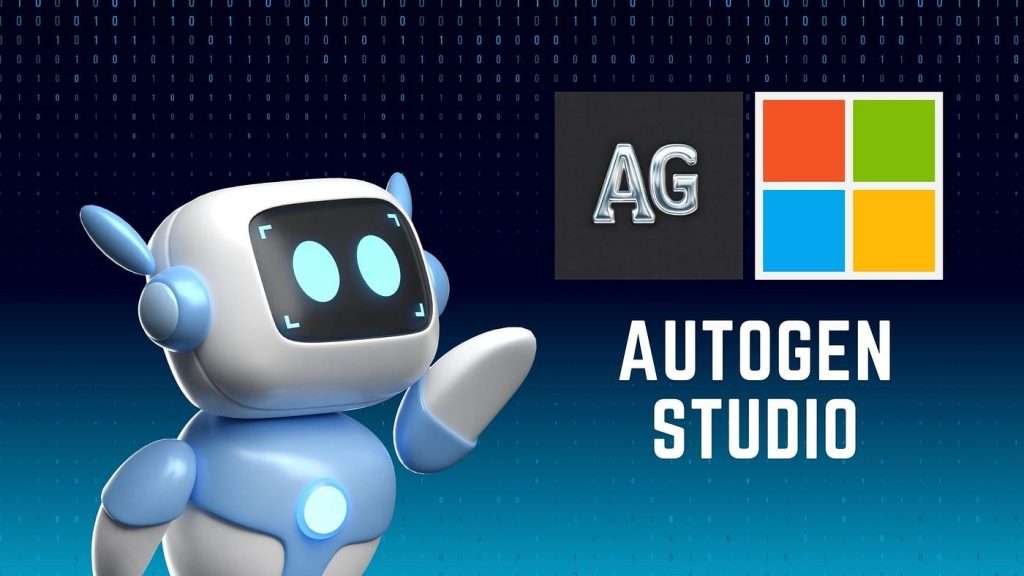Hey, what’s up, everyone? Welcome back to the channel—Derek here! In today’s tutorial, I’m diving deep into the world of AI and showing you how to create self-improving AI agents using AutoGen Studio. If you’re into AI, automation, or just curious about the latest tools to make your tech life easier, this video is for you.
But before we get started, you’re probably wondering: What is AutoGen Studio? Well, AutoGen Studio is a new AI tool developed by Microsoft (currently in beta) that lets you create autonomous AI agents. Think of it like ChatGPT but with the ability to automate tasks, interact with APIs, and even perform actions directly on your computer. The best part? No coding required!
👉 Watch the video below to get started and follow along step-by-step!
What You’ll Learn in This Tutorial
In this video, I’ll walk you through how to:
- Set up AutoGen Studio on your computer.
- Install essential tools like VS Code and Miniconda.
- Create Python environments for your AI agents.
- Use AutoGen Studio to build AI agents that can improve themselves over time by generating, testing, and optimizing code automatically.
I’ve broken it down into simple steps, and I promise it’s easier than it sounds!
Setting Up AutoGen Studio
To get started, the first thing we need to do is install Visual Studio Code (VS Code) and Miniconda. These tools will help manage Python environments, making it easier to run different programs. Once you’ve got those set up, you’ll be ready to dive into AutoGen Studio.

Don’t worry—this isn’t a coding-heavy tutorial. In fact, that’s the beauty of AutoGen Studio: it automates most of the heavy lifting for you!
Installing Miniconda for Python Management
Miniconda is essential because it allows us to manage different versions of Python seamlessly. Many programs, especially when dealing with AI, require specific versions of Python to work correctly. I’ll show you exactly how to set up Miniconda, install the correct Python version (3.11, recommended by Microsoft), and get your environment ready for building AI agents.
Building Self-Improving AI Agents
Once we’ve set up the tools, the fun begins! I’ll walk you through how to create three types of AI agents:
- Planner Agent: This agent plans the tasks that need to be done.
- Programmer Agent: This one writes the code based on the planner’s instructions.
- Optimizer Agent: This agent reviews and refines the code to ensure it’s perfect.
These agents work together in a workflow, continuously improving and building better code. You don’t need to lift a finger once they’re up and running!
Running and Testing Your AI Agents
After setting everything up, I’ll show you how to test your new agents by having them perform real-world tasks, like looking up stock prices or performing web searches using a free API. The potential here is massive—you can automate virtually anything!
Practical Examples
In the video, I also show you practical examples of these AI agents in action:
- Using a free API to look up stock prices.
- Performing a web search with DuckDuckGo.
By the end of the tutorial, you’ll have a team of self-improving AI agents ready to take on a variety of tasks, automating processes that would otherwise take a lot of manual effort.
Ready to Build Your Own AI Agents?
I know that was a lot of info, but trust me—it’s worth it! If you want to get your hands dirty and see these AI agents in action, watch the full video for the complete walkthrough. I break down every step so you can follow along and set up your own AI-powered workflow.
👉 Click play above to watch the full tutorial and start creating your own AI agents today!
And don’t forget, if you’re a single dad looking to leverage tech for personal growth and financial freedom, make sure to join my free Skool community (founding members get lifetime access!). It’s packed with resources, prompts, and strategies to help you excel in both tech and fatherhood.
Thanks for checking out the blog post, and I hope to see you over on the video! Until next time, peace out!
